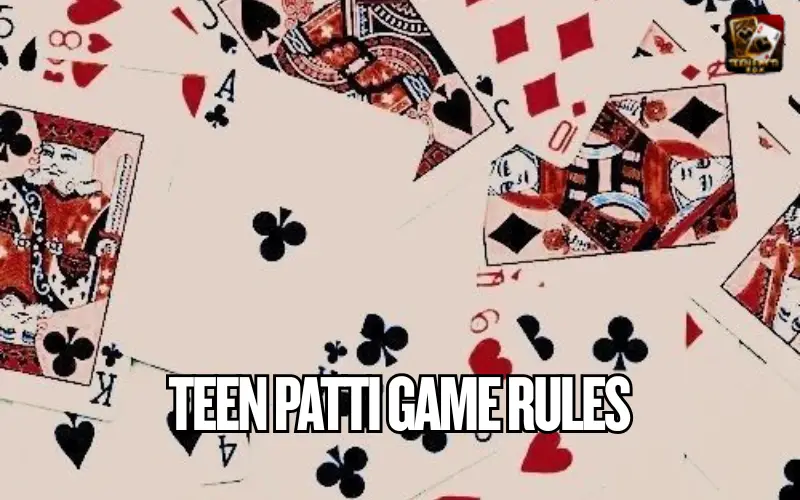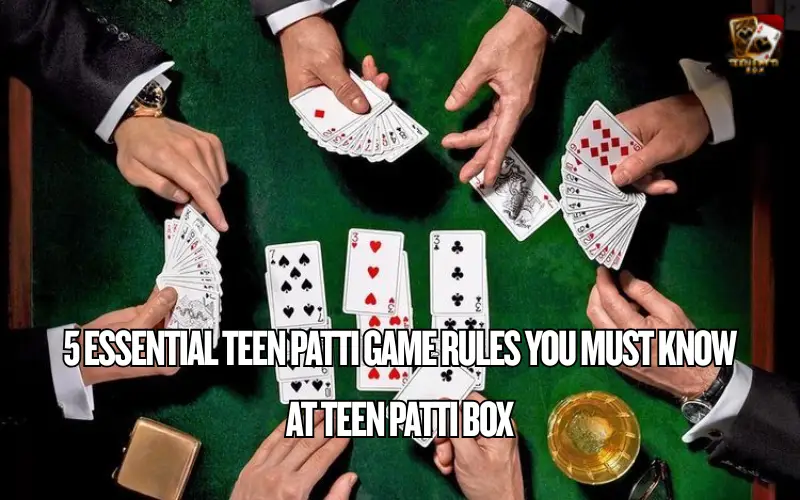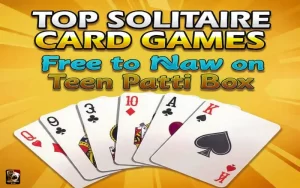Teen Patti, the electrifying card game that’s a staple at Indian gatherings, has evolved into a digital sensation with platforms like Teen Patti Box leading the charge. If you’re diving into this high-stakes world of flushes, straights, and bluffs, mastering the core rules is your ticket to victory. Teen Patti Box, a premier online gaming hub, offers seamless multiplayer tables, real-money options, and beginner-friendly interfaces to practice these rules anytime. In this comprehensive guide, we’ll uncover 5 essential Teen Patti game rules that every player must know to dominate the tables on Teen Patti Box. From hand rankings to betting mechanics, these fundamentals will sharpen your strategy and boost your wins.
Whether you’re a newbie or brushing up, Teen Patti Box’s vibrant community and tutorials make learning a breeze. Keywords like “Teen Patti rules” and “Teen Patti Box gameplay” are trending as more players seek authentic experiences online. Let’s shuffle the deck and get started!
Teen Patti, often called “3 Patti” or Indian Poker, is played with a 52-card deck (no jokers) among 3-6 players. The goal? Form the best three-card hand or bluff your way to the pot. On Teen Patti Box, you can join free tables to experiment or ante up for cash games with secure transactions. What sets Teen Patti Box apart is its intuitive app, live dealer modes, and anti-cheat algorithms, ensuring fair play. With millions of users, it’s the go-to for real-time action. Knowing these rules isn’t just about winning chips – it’s about the thrill of outsmarting opponents. Recent stats show a 50% rise in online Teen Patti searches, fueled by platforms like Teen Patti Box. Now, let’s break down the essential Teen Patti rules that form the game’s backbone.
Why Master These Teen Patti Rules on Teen Patti Box?
Before delving in, grasp why these rules are crucial. Teen Patti blends luck, psychology, and math, but without solid rule knowledge, you’ll fold too early or chase bad hands. On Teen Patti Box, rules are strictly enforced via automated systems, preventing disputes and letting you focus on strategy. Customize table stakes, play private games with friends, or compete in tournaments for prizes. This platform’s chat and emoji features add social flair, mimicking real-life vibes.
1. Understanding Hand Rankings: The Hierarchy of Winning Hands
At the heart of every Teen Patti game is the hand ranking system – the first essential Teen Patti rule you must internalize. Unlike Poker, Teen Patti uses only three cards, making rankings straightforward yet pivotal. The highest hand is the Trail (three of a kind), like three Aces, which crushes everything. Next comes the Pure Sequence (straight flush), such as A-K-Q of hearts, followed by Sequence (straight, any suits). Then, Color (flush, same suit), Pair (two matching cards), and finally, High Card (no combinations, highest card wins).
On Teen Patti Box, hand rankings are displayed in-app during showdowns, with animations highlighting winners for clarity. For example, in a four-player table, if you hold a Pair of Kings and your opponent shows a Color, you’ll lose the pot. Ties are broken by the highest kicker card or suits (Spades > Hearts > Diamonds > Clubs). This rule demands quick evaluation – practice on Teen Patti Box’s low-stake tables to spot strong hands early.
Why is it essential? Misjudging rankings leads to costly bluffs or folds. In real games on Teen Patti Box, where pots can swell to thousands, accuracy pays off. Pro tip: Memorize via mnemonics – “Trail Tops, Sequences Soar.” This rule fuels 70% of strategic decisions, per gaming forums. On Teen Patti Box, use the hand analyzer tool post-game to review rankings and improve. Mastering this sets the foundation for bluffing mastery in Teen Patti Box tournaments.
2. Betting Structure: Blind, Chaal, and Pot Building
Betting is the pulse of Teen Patti, governed by the second essential rule: the structure of blinds, chaals, and shows. Each player antes a small “boot” to start the pot. The dealer (rotating clockwise) deals three cards face-down. Players begin “blind” – betting without seeing cards – matching the current stake or raising. After the first round, you can “chaal” (see your cards for a higher bet, usually double the blind) or stay blind for cheaper pots.
On Teen Patti Box, the interface auto-tracks blinds and chaals, with buttons for “Blind,” “Chaal,” or “Fold.” For instance, if the stake is ₹10 blind, chaal costs ₹20, but blinds get odds advantages later. The game progresses until one player remains or all show hands. Side pots form if bets vary, ensuring fair splits.
The fun? Betting builds tension – stay blind to save chips or chaal for informed plays. Teen Patti Box’s real-time betting keeps sessions dynamic, with timers preventing stalls. This rule is key for bankroll management; over-betting blinds can bust you fast. In high-traffic lobbies, watch pros chaal strategically to force folds.
3. Dealing and Starting the Game: Fair Play from the Get-Go
No Teen Patti session thrives without proper dealing – the third essential rule covering card distribution and game initiation. Use a standard deck shuffled thoroughly. The dealer cuts the deck, deals one card at a time clockwise starting left of the dealer, all face-down. No peeking until chaal! The first player left of the dealer acts first. If fewer than three players, adjust for “tight” games, but Teen Patti Box recommends 3-6 for optimal flow.
On the platform, virtual dealing is RNG-certified for randomness, with replay options to verify fairness. Post-deal, confirm no misdeals (e.g., exposed cards mean a re-deal). The boot ante is collected centrally, often 1/20th of the minimum stake.
Why vital? Fair dealing prevents cheating accusations, a common pitfall in home games. Teen Patti Box’s transparency builds trust, letting you focus on hands. For newbies, watch tutorial videos on the app – dealing errors can void pots. This rule ensures equity, especially in multi-round games where dealer position rotates. In essential Teen Patti rules discussions, dealing tops lists for its role in pacing. Try speed-deal modes on Teen Patti Box for quick games under 10 minutes. Mastering this kickstarts confident play, setting up those epic bluffs.
4. Player Actions: Fold, Show, and Side Show Mechanics
Actions define your fate in Teen Patti, encapsulated in the fourth essential rule: knowing when to fold, show, or request a side show. After betting rounds, options include: Fold (quit and lose ante), Call (match bet to continue), Raise (increase stake), or Show (reveal hands at game’s end, pot to best hand). A twist is Side Show – after chaal, request to compare hands privately with the previous player (costs extra, like 1.5x stake). If your hand loses the side show, you must fold.
Teen Patti Box simplifies this with intuitive buttons and pop-ups explaining costs. For example, in a ₹50 pot, a side show might cost ₹75, but it weeds out weak hands without full showdown. Only the requester sees both cards; the opponent can decline, forcing a chaal.
The excitement lies in timing – a bold side show can intimidate, revealing bluffs. This rule adds depth, with pros using it to control pot size. On Teen Patti Box, track action history to predict opponent styles. Common mistake: Overusing side shows, draining chips. In online lobbies, this mechanic shines in heads-up scenarios. Searches for “Teen Patti side show rules at Teen Patti Box” highlight its popularity among intermediates. Practice in free rooms to hone instincts – fold weak high cards early, save shows for monsters.

5. Winning and Pot Division: Claiming Your Prize
The climax of Teen Patti is winning the pot, ruled by the fifth essential rule: determining victors and splitting winnings. The last player standing takes the full pot if others fold. If multiple remain, a showdown occurs – highest hand wins. In ties, split evenly or by kickers. Side pots go to the best hand among contributors. No ties in Trails; suits decide.
On Teen Patti Box, auto-calculations handle divisions instantly, with notifications for winners. For instance, a ₹1,000 pot split between two ties yields ₹500 each, minus rake (platform fee, ~5%). In tournaments, chips convert to prizes.
Why crucial? Misunderstanding pots leads to disputes; Teen Patti Box’s logs resolve them. This rule rewards patience – wait for strong hands or bluff folds. In cash games, track rake to maximize profits. This caps the essentials, tying back to rankings and betting. Teen Patti game rules like this ensure smooth, rewarding play. Join Teen Patti Box’s pot-building challenges for practice.
Conclusion
These 5 essential Teen Patti game rules – hand rankings, betting structure, dealing, actions, and pot division – are your blueprint to success on Teen Patti Box. From casual spins to high-roller tables, the platform’s features like live stats and bonuses make rule mastery engaging. Download today, hit the tables, and turn knowledge into wins. With SEO-driven accessibility, Teen Patti Box is where rules meet real excitement. Shuffle up and play smart!








